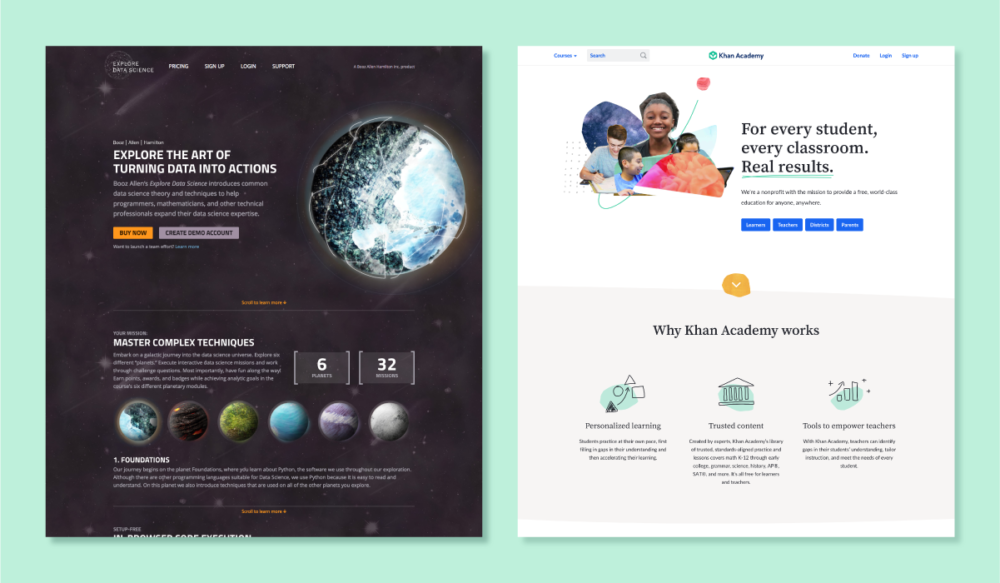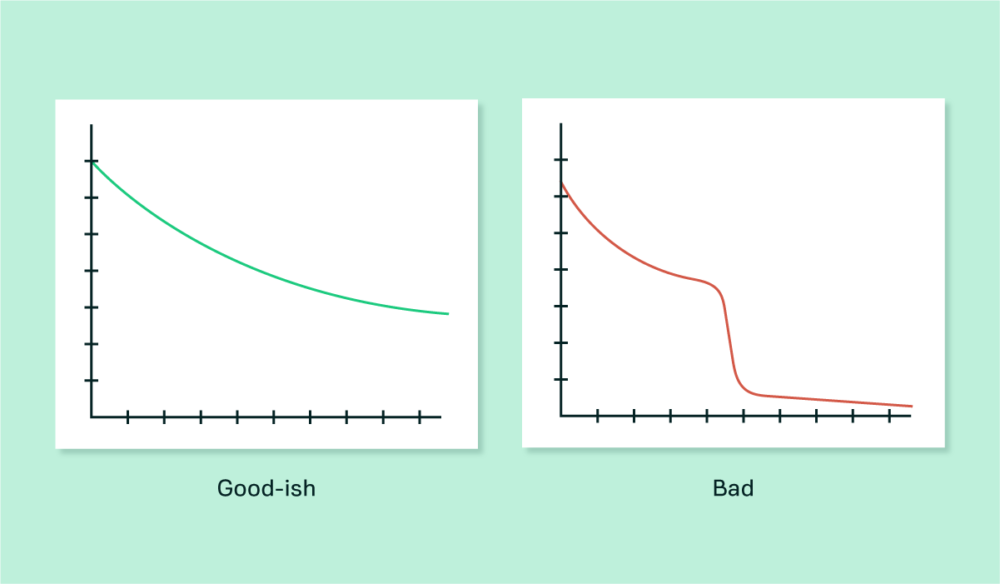To Create a Better Learning System, Focus On the Students

Article by Nathaniel Bibler — May 3, 2021

Finding or building the right eLearning platform is difficult. Digging into the Scrabble bag of acronyms and coming out with the perfect combination of features you want (along with the fewest complexities that you don’t) is a nerve-wracking task. Further, when the system involves the livelihoods of students, that anxiety only grows.
What’s the difference between eLearning and an LMS? Haven’t LXPs replaced LMSs? Do I need SCORM or xAPI? And what is that “C” in LCMS, anyway? Why do systems still use AICC’s HACP? What about assessment?
The training and education industry isn’t doing you, nor itself, any favors here. Besides the meaningless acronyms, the field appears to be a long, desolate trail of abandoned answers. Each one raised up and touted to be an oasis, but later summarily thrown aside when revealed to be a mirage.
How do you get past these unending acronyms to make confident decisions? First and foremost, you need a clear understanding of your audience and picture of your goal.
Your eLearning Student’s Time is Valuable
If nothing else, it’s important to understand this early: Everything revolves around your students’ experiences, and those students do not want to be taught. They are at best cautious, questioning the value, expertise, efficacy, and applicability of the material. At worst, they are an unwilling, or even captive, party simply fulfilling an arbitrarily dictated requirement.
Your students have lives. They have needs, priorities, and deadlines that are all vying for their limited time and attention. It is crucial to understand how your training content and the system providing it fits into their world. Their time is precious and should be treated as such.
If you forget the students’ perspective, then these platforms quickly become just another annoyance which fails to deliver a positive or successful experience. But, if done well, the learning endeavor can feel like an easy, even near-effortless task.
Educational Platforms are Layers of Features
At their core, every educational or training system is built to deliver knowledge to students. But, it’s there where the similarities between them ends.
As an organization’s needs and priorities take over, they drive the features, functionality, tone, and direction of the system. And it’s the summation of these parts that uniquely shapes the personality, complexity, and overall effectiveness of each system.
When Booz Allen Hamilton created Explore Data Science to retrain their data analysts into data scientists, they kept the scope small and focused. They knew the number of employees. The students’ motivations and the value of the training was clear. A narrow, step-by-step map was created to link their current knowledge and skills to the understanding and proficiencies they must demonstrate by the end. From there, a purpose-built system was identified, crafted, and deployed to successfully achieve their goal.

In contrast to that, Khan Academy has the goal of educating everyone across all ages, knowledge levels, and disciplines. They provide a vast array of education to a nearly infinitely large audience. Their domain ranges from SAT prep materials for grade school students, financial literacy training for young professionals, and even virtual classroom environments with assignments, homework, and test preparation.
The scope of Khan Academy is large and its goals are many. A system like that requires a massive infrastructure of support systems and personnel to identify knowledge gaps, organize and create custom learning maps, assignments, and intelligently suggest follow on activities which support both a self-driven or instructor-led education. Then, there are student support services and safety nets which must be in place to capture and remediate troubled students. There’s localization and transcription of content and materials to consider. The list goes on.
At their root, both Explore Data Science and Khan Academy are systems for delivering knowledge. From there, they each grow by adding their own layers of supporting features, integrations, and systems to meet their differing organizational goals. At every step, each new addition is ultimately measured against: Does this improve students’ experiences and outcomes?
With eLearning, Content is King
While it may seem obvious, this is often overlooked: No amount of features, animations, interactions, AI, ML, or gamification can mask poor content. If the material is bad, then the entire system is bad.
Getting the educational materials right is a time consuming, tedious, and often thankless task. True of any great system: When the content is done well, consuming it feels effortless and its very existence is easily overlooked. Students focus not on deciphering the content itself – trudging through poor wording or confusing metaphors – but instead focus solely on relating, categorizing, and otherwise internalizing the concepts presented before them.
The costs and efforts involved to craft such engaging and effective content is always underestimated. Because of that, many organizations fail to place a similar level of importance (and therefore resources) on the initial development and ongoing maintenance of their content.
More often, resources which would be better used by creating more engaging content are instead funneled into the platform itself. This is an easy trap to fall into because the platform often services multiple sets of materials and audiences larger than a single learning path. The money spent feels more impactful and is seen as a more efficient use of limited resources.
That’s certainly not to say that the platform and delivery system shouldn’t have any resources. It does service everyone and must be executed as well as possible. Resources targeted on the system are not at all wasted. Just remember that bells and whistles can’t save bad content. But, good content can be made greater with well thought out and purposeful features around it.
Be Careful Not to Overgeneralize Your Audience
Whether you’re creating a large platform with multiple tracks, courses, and paths or a singularly focused learning system, be careful not to overgeneralize your audience. Build for what you need today to effectively deliver to your current audience with your current materials and goals in mind.
While it’s important to have a plan, be careful to not spend too much time or effort trying to forecast or even build to where things might go three or five years into the future (the pandemic made this abundantly clear). More often than not, this will result in efforts wasted on preparing for scenarios that never materialize. Or worse, it inadvertently makes it more difficult to adapt to the unknown (and unexpected) need that reveals itself tomorrow.
Focusing too heavily on tomorrow’s panacea and what you may need when you get there takes resources away from what may benefit the system today. In the software development world this is referred to as premature optimization – spending effort making something better that really isn’t even yet used. Or, put in a more cryptic, but much more succinct way: YAGNI (“You Aren’t Going to Need It”).
How do you know what works, what doesn’t, where students are having trouble, and where you should focus efforts? Just like everything else, track and measure it.
Track What’s Working in Your eLearning Program and Focus on the Trouble Spots
Keeping track of how quickly and easily consumers are moving through your material is invaluable for reducing the content development and maintenance feedback loop. It informs all future platform decisions and flags areas of interest for content modifications.
With that data, keep an active eye out for trouble spots. For example, create a graph showing students’ starts against completions at various checkpoints throughout your materials. These graphs will naturally show an exponential decay – more students always start something than ultimately finish it. However, if many students get through the first checkpoint, but very few get through the second, then that’s a cliff. There’s a problem between checkpoints one and two.

From there, perform some introspection. Did the material suddenly get too difficult? Did the first section fail to convey all of the necessary information? Did the terminology change? Were there incorrect assumptions made?
While harsh, this could be the point at which students aren’t recognizing value for their efforts. Perhaps this area contains the breaking point when they’re getting confused, frustrated, or just altogether leaving.
These analytics may point toward other, non-content issues as well. Perhaps a new type of question or interaction is used which is confusing and impeding progress. This area may have a technical problem which is broken on some devices.
Collecting data (even strictly anonymous data) about how students are consuming and progressing removes much of the guessing game. It may even highlight problems you didn’t know that you had. Either way, this data is necessary both for making informed decisions and later validating those changes being made. Each step improves the content, the platform providing it, and ultimately your student’s success.
Build What You Need Today
The fundamental goal, whether you’re building to educate or to train, is to effectively deliver new information as easily as is possible. At each step, it’s vitally important to keep your students in mind.
Every word written, every feature added, every button click required should be considered against whether or not it fills a missing need, improves students’ experiences, or enhances desired outcomes. Resist the urge to add features only because other platforms do it. They may have very different goals than you. And try not to spend too much time focusing on a future that may never come to fruition.
Create the best content and delivery system that you reasonably can for the audience that you have today. Continually observe and iterate to make small, measurable steps toward improving each day. If you made the end user – the student – the focus of each measurable step forward, you’re bound to produce a powerful learning tool.
Up Next —
Demystifying Software Estimates With Probability Curves
Pricing custom software is not an exact science, but you can gain clarity and accuracy when estimating software development costs by using probability curves.
Read this Article →
